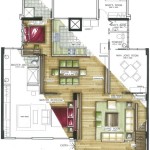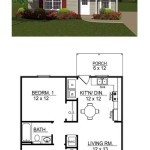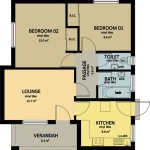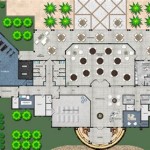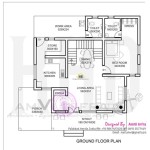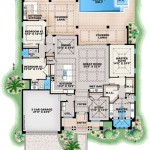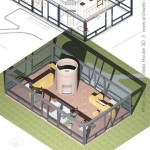Villa House Plans & Floor Plans
Finding the perfect villa house plan requires careful consideration of various factors, including lifestyle, budget, and desired amenities. Understanding the nuances of villa floor plans is crucial for making informed decisions that translate into a dream home. This article provides a comprehensive overview of villa house plans and floor plans, covering essential aspects to consider during the planning process.
Key Considerations for Villa House Plans
Before diving into specific floor plans, it's important to establish a clear understanding of the overarching goals and requirements. Consider the following key factors:
* Lot Size and Orientation: The available land significantly influences the villa's design. Analyzing the lot's dimensions, topography, and sun exposure is crucial for maximizing space and natural light. * Number of Bedrooms and Bathrooms: Determining the required number of bedrooms and bathrooms ensures the plan accommodates current and future needs. * Lifestyle and Functionality: Consider how the space will be used daily. Do you frequently entertain guests? Is a home office required? These questions shape the layout and flow of the villa. * Budget Constraints: Establishing a realistic budget helps narrow down options and prevents overspending. * Architectural Style: Defining the preferred architectural aesthetic, whether modern, Mediterranean, or traditional, guides the design process and ensures a cohesive look.Understanding Villa Floor Plans
A well-designed floor plan is the foundation of a successful villa. It dictates the layout, flow, and functionality of the space. Analyzing various floor plan options is crucial for finding the perfect fit.
* Open Floor Plans: Open floor plans create a sense of spaciousness by minimizing walls between living areas. This design promotes interaction and flow, making it ideal for entertaining. * Closed Floor Plans: Closed floor plans offer more privacy by separating rooms with walls. This traditional layout is suitable for individuals or families who prefer distinct, designated spaces. * Split-Level Floor Plans: Split-level designs utilize changes in elevation to create distinct zones within the home. This can enhance privacy and optimize space utilization. * Single-Story vs. Multi-Story: Choosing between a single-story or multi-story villa depends on lifestyle, lot size, and accessibility requirements. Single-story villas offer ease of movement, while multi-story villas maximize space on smaller lots.Essential Elements of Villa Floor Plans
Certain elements are fundamental to a well-functioning villa floor plan. Considering these aspects ensures a comfortable and practical living space.
* Living Areas: The living room, dining area, and kitchen are often the heart of the villa. Careful planning ensures these spaces are functional, well-lit, and conducive to both relaxation and entertainment. * Kitchen Layout: The kitchen's design should optimize workflow and efficiency. Consider the work triangle, storage space, and appliance placement for maximum functionality. * Bedroom Placement: Bedrooms should be strategically located for privacy and comfort. Consider factors such as noise levels, natural light, and proximity to bathrooms. * Bathroom Design: Bathrooms should be designed for both functionality and aesthetics. Consider storage, ventilation, and lighting to create a comfortable and practical space. * Outdoor Spaces: Patios, balconies, and gardens extend the living space outdoors. Integrating these areas into the floor plan enhances the villa's overall appeal and functionality.Benefits of Customized Villa House Plans
While pre-designed plans offer a starting point, customizing a villa house plan allows for greater flexibility and personalization.
* Tailored to Specific Needs: Custom plans address individual preferences and lifestyle requirements, resulting in a home that perfectly fits the homeowner’s vision. * Optimized Space Utilization: Custom designs maximize the use of available space, ensuring every square foot serves a purpose. * Unique Architectural Features: Custom plans allow for the incorporation of unique architectural details and design elements that reflect personal style. * Integration of Sustainable Features: Custom plans can prioritize energy efficiency and incorporate sustainable materials, reducing environmental impact.Working with Architects and Designers
Collaborating with experienced architects and designers is crucial for bringing a villa vision to life. These professionals provide expertise and guidance throughout the design and construction process.
* Clear Communication: Open communication between the homeowner and the design team ensures the final plan aligns with the desired outcome. * Design Expertise: Architects and designers bring their expertise to the table, offering creative solutions and optimizing the design for functionality and aesthetics. * Technical Knowledge: Professionals ensure the plan adheres to building codes and regulations, streamlining the permitting process. * Project Management: Architects and designers often oversee the construction process, ensuring the project stays on schedule and within budget.Exploring Different Villa Styles
Villa styles vary greatly, each with its unique characteristics and design elements. Researching different styles helps narrow down preferences and inform the design process.
* Mediterranean Villas: Mediterranean villas are characterized by their stucco exteriors, terracotta roofs, and arched doorways. They often feature courtyards and outdoor living spaces. * Modern Villas: Modern villas emphasize clean lines, minimalist aesthetics, and open floor plans. They often incorporate large windows and natural materials. * Traditional Villas: Traditional villas draw inspiration from classic architectural styles, featuring ornate details, symmetrical facades, and formal gardens.Analyzing Site Conditions
Understanding the site conditions is crucial for designing a villa that harmonizes with its surroundings.
* Topography: The site's slope and contours influence the villa's footprint and foundation design. * Soil Conditions: Soil testing determines the suitability of the soil for construction and informs foundation choices. * Climate: The local climate dictates design choices related to insulation, ventilation, and window placement. * Views: Optimizing views from the villa enhances its aesthetic appeal and connection to the surrounding landscape.Legal and Regulatory Considerations
Navigating legal and regulatory requirements is essential for a smooth construction process.
* Building Permits: Obtaining the necessary building permits ensures compliance with local regulations. * Zoning Regulations: Zoning regulations dictate allowable building heights, setbacks, and land use. * HOA Restrictions: If the villa is located within a homeowners' association, adhering to HOA guidelines is crucial.
Nice Ideas Here For Waterfront House Plans With Photos Modern Floor

New Home Designs Single Double Y House Floor Plans Villa Allure

Floor Plans Villa Lifestyle Arab Arch Arabic House Design Plan

Large Luxury Home Plans With Pictures Houseplans Blog Com

Villa Rivero Luxury Floor Plans Mediterranean

Elegant And Functional Luxury House Plans Houseplans Blog Com

Lochinvar Luxury Home Blueprints Open Floor Plans

Villa Quality Wooden Cottage By Aito Log House Finland

Luxury House Plan

Luxury House Plans Under 2 500 Square Feet Blog Dreamhomesource Com

